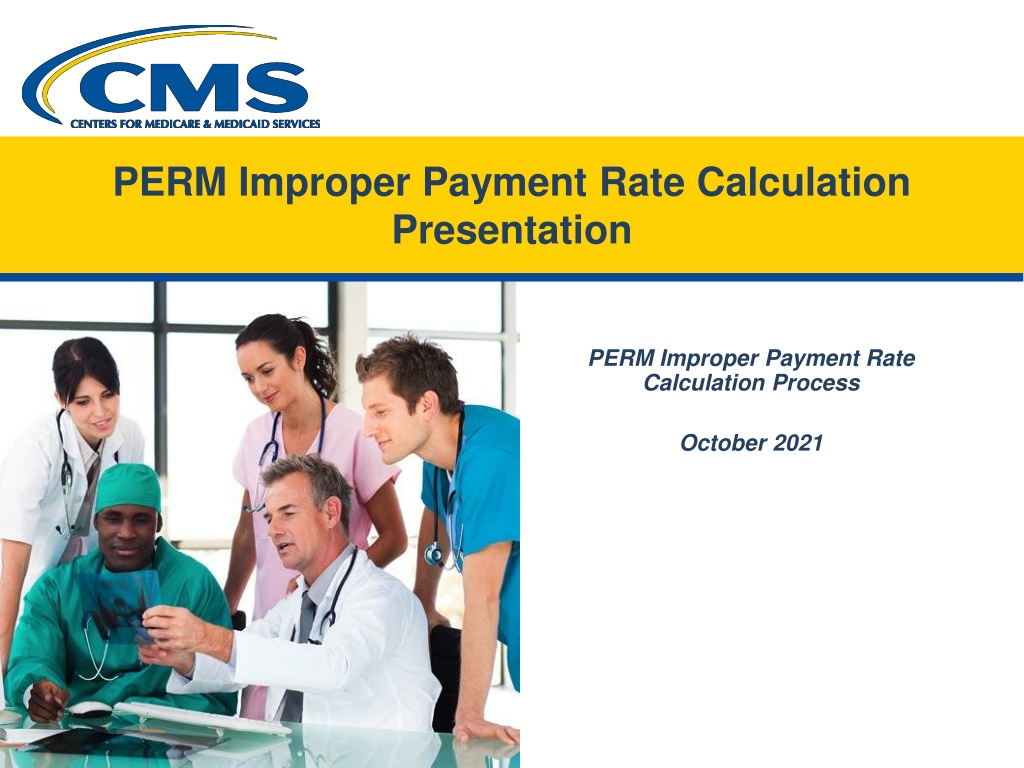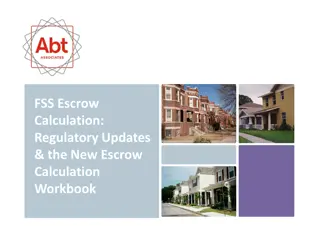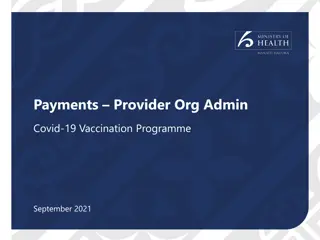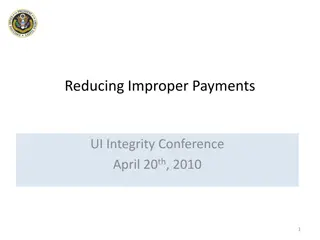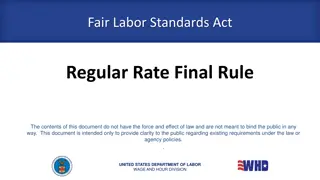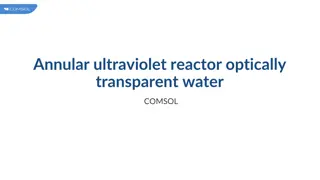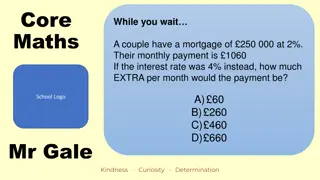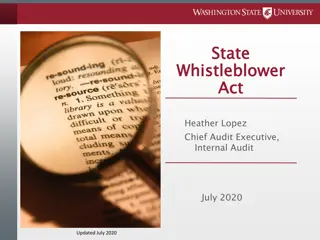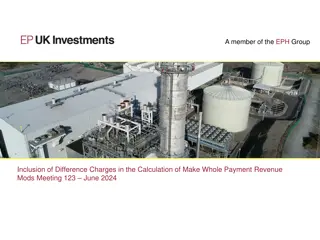Improper Payment Rate Calculation Process
Dive into the detailed process of calculating improper payment rates, including the thorough approval process, focusing on projected dollars in error, and analyzing error trends. Learn about determining weights, calculating projected dollars, and adding up projected improper payments in different strata to get a comprehensive view of state improper payment rates.
Download Presentation

Please find below an Image/Link to download the presentation.
The content on the website is provided AS IS for your information and personal use only. It may not be sold, licensed, or shared on other websites without obtaining consent from the author.If you encounter any issues during the download, it is possible that the publisher has removed the file from their server.
You are allowed to download the files provided on this website for personal or commercial use, subject to the condition that they are used lawfully. All files are the property of their respective owners.
The content on the website is provided AS IS for your information and personal use only. It may not be sold, licensed, or shared on other websites without obtaining consent from the author.
E N D
Presentation Transcript
PERM Improper Payment Rate Calculation Presentation PERM Improper Payment Rate Calculation Process October 2021
Most Important Takeaways The approval process of the PERM methodology is very thorough PERM Calculations are not easily replicated Focus on projected dollars in error to understand what drives the rate Focus on number of errors to understand common error trends
Calculating State Improper Payment Rates States send universe data, and the Statistical Contractor (SC) draws a sample of claims from the universe Review Contractors (RC) review sampled claims and determine improper payment amount SC calculates an estimated improper payment rate from the reviewed sampled claims
Step 1. Determine weights The number of claims sampled is compared to the number of items in the stratum in the universe For example, in the first stratum, if 10 in 1000 items are sampled, then 1/100 would be the sampling frequency (10/1000) This means one item would represent 100 items in that strata thus giving the sampled unit a weight of 100
Step 2. Calculate projected dollars Multiply payments and errors by weights to calculate projected improper payments and projected paid amount Using the previous example, if $200 in error is found in a strata with a weight of 100, then this would project to $20,000 in error for the entire stratum $200 * 100 = $20,000 projected dollars in error
Step 3. Add all projected dollars Add up all of the projected improper payments and projected paid amounts from each strata within a component (Medicaid/CHIP, FFS/MC/Eligibility) Strata 1: $100,000 improper payments $2,000,000 total payments Strata 2: $50,000 improper payments $2,000,000 total payments Strata 3: $100,000 improper payments $2,000,000 total payments Strata 4: $200,000 improper payments $2,000,000 total payments Strata 5: $50,000 improper payments $2,000,000 total payments
Step 4. Calculate improper payment rate Total projected improper payment: $500,000 Total projected paid amount: $10,000,000 Improper payment rate: Projected improper payment/Projected paid amount The improper payment rate for this state s component would be $500,000 / $10,000,000 = 5.00%
State Combined Claims Improper Payment Rate The claims improper payment rate is calculated by combining the state s FFS and MC rates, weighted by the size of each program For example, if a state s FFS expenditures are 25% of the state s total expenditures, then the FFS improper payment rate will contribute 25% to the claims improper payment rate
State Combined Overall Improper Payment Rate Overall improper payment rate including eligibility is calculated using the following: Overall improper payment rate is equal to the claims rate (FFS and MC) plus the eligibility rate and less the overlap between claims and eligibility Statistical overlap is removed since the eligibility sample is drawn from the FFS and MC universes
Cycle Improper Payment Rates The cycle improper payment rate Calculated by combining all 17 state component rates(FFS, managed care, eligibility) The cycle component rates are then combined to calculate the cycle overall rate Is impacted by each state s: Total expenditures Improper payment rate
National Rolling Improper Payment Rates The national improper payment rate Is called rolling because it includes rates from three cycles of data RY 2021 includes improper payment rates from RY 2019, RY 2020, and RY 2021 cycles Similar to cycle rate State s contribution is based on the total expenditures and improper payment rates The rolling component rates are combined to calculate the national rolling overall rate
State Improper Payment Rate Targets The state FFS and managed care target rates are half of the difference between the current state component rate and the component anchor. For example FFS rate is 10.0% FFS anchor is 3.0% FFS target = 10.0% - (10.0%-3.0%) / 2 = 6.5% 0% 6.5% 10.0% 3.0% If the state rate is already lower than the anchor, then the new target rate is the same as the current rate
